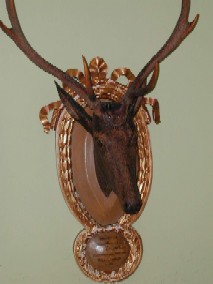 |
|
|
|
|
|
|
||||
Forestry in Germany3. Hunting as a main factor influencing the forests in Germany
The original predominance of hunting over forestry was dissolved by the late 1800s/early 1900s, and hunting and wildlife science was assigned a minor role within forestry." (Schwartz 2002) Nevertheless especially in the Nazi-period (1933-1945) and today in some private forests hunting interests were or are quite dominant and forest trees and their regeneration suffer severely from damage by game. By the distinction of rare species and due to the high costs of fence protection for broadleaf trees this often results in pure pine and spruce stands. The timber quality of those even might be diminished by the debarking activities of deer. Source: Schwartz, E. 2002. Die Verflechtung von Forstwirtschaft und Jagd in der Geschichte. (The Historical Intermeshing between Forestry and Hunting: German with English summary). Forst und Holz 57 (7), 195-199 Next page: The development of a sustainable forestry based on the needs of mining |
|
|
|
|
